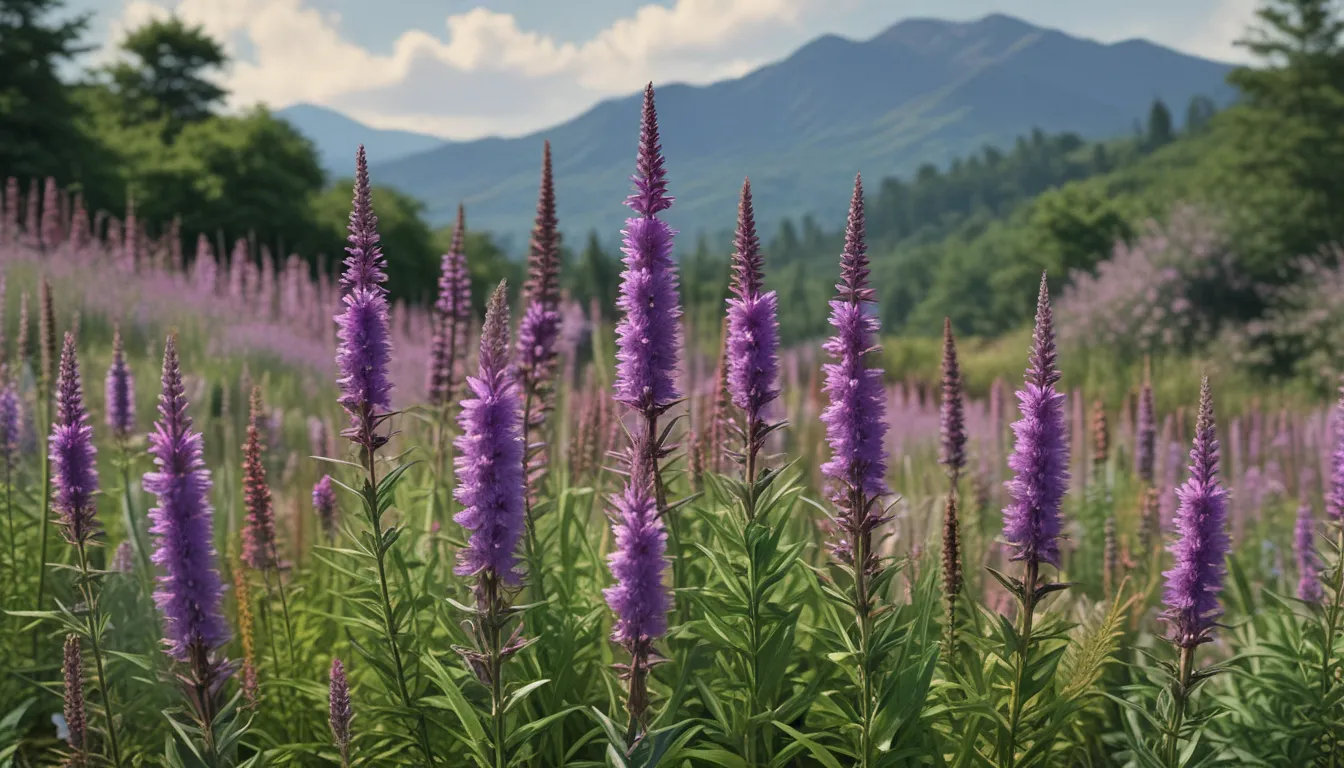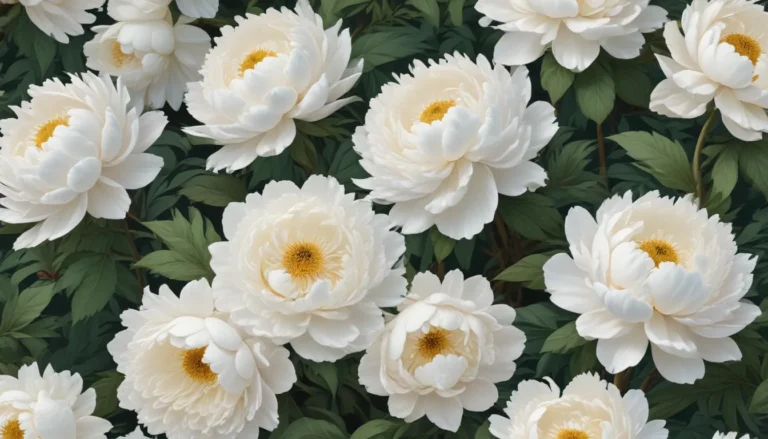The Ultimate Guide to Planting and Growing Blazing Star Flowers (Liatris Spicata)

Are you searching for a resilient perennial to brighten up your summer garden with a pop of vibrant color and striking form?
When the scorching heat of summer rolls in, our gardens can start to look a little lackluster as many plants struggle to cope with the dry conditions. But fear not, there is a solution to beat the summer heat: planting native species like Liatris spicata.
Popularly known as blazing star, gayfeather, or prairie star, L. spicata is a versatile North American plant that adds a touch of elegance to any garden. With tall plumes of amethyst or white flowers and delicate grass-like foliage, this hardy wildflower is a favorite among both novice and experienced gardeners.
Easy to grow and propagate, Liatris spicata is a low-maintenance gem that thrives in the heat of summer when other plants struggle. In this comprehensive guide, we will explore everything you need to know to successfully plant and grow this stunning prairie perennial in your garden!
What You Will Learn
- Cultivation and History – Propagation – Best Growing Conditions – Growing Tips – Pruning and Maintenance – Reliable Cultivars to Consider – Managing Pests and Diseases – Best Uses in the Garden – Liatris Quick Reference Growing Chart
Cultivation and History
Originating from the prairies and meadows of Eastern North America, Liatris spicata is a resilient perennial that boasts narrow, grass-like leaves and tall spikes of vibrant purple or white flowers.
Blooming from mid-summer to autumn, this clump-forming plant belongs to the Asteraceae family and the Liatris genus, which consists of approximately 40 species. Growing from corms with tuberous roots, L. spicata thrives in Zones 3 to 9.
With its upright growth and attractive foliage, L. spicata requires minimal space in the garden and rarely needs staking. The long-lasting flowers attract a variety of pollinators, including bees, butterflies, and hummingbirds, making it a valuable addition to any garden.
Aside from its ornamental value, the roots of L. spicata have been historically used by Native Americans for medicinal purposes.
Propagation
Blazing star can be propagated through division of corms and tuberous roots, as well as from seed.
By Division
Here’s a step-by-step guide to propagating Liatris spicata through division:
- Dig around the clump in spring when leaves emerge. 2. Lift the plant out and rinse off the soil to expose the roots. 3. Use a sharp knife to divide the roots into sections. 4. Ensure each section has roots and a growing bud or leaf. 5. Remove any small bulbils. 6. Dust the divisions with a fungicide. 7. Plant the tuberous roots in a starburst pattern. 8. Space the new pieces apart and water thoroughly. 9. Mulch to suppress weeds and retain moisture.
By Seed
Liatris spicata can also be started from seed, but they require cold exposure to germinate successfully:
- Collect seeds in the fall and store them in a cool, dry place. 2. Mix seeds with a moist medium and store in the refrigerator. 3. Plant seeds outdoors when the weather warms up.
Best Growing Conditions
To ensure the successful growth of Liatris spicata, follow these tips:
- Plant in full sun or light shade. 2. Use well-drained soil with medium fertility. 3. Prepare the soil by adding organic matter and improving drainage if necessary. 4. Water young plants regularly until established. 5. Provide additional watering during dry spells.
With its tolerance for drought and ability to thrive in various soil conditions, L. spicata is a resilient plant that can withstand the challenges of summer.
Growing Tips
Blazing star is a hardy plant that requires minimal attention once established. Here are some growing tips to help your Liatris thrive:
- Water new plantings regularly until a strong root system is established. – Avoid over-watering to prevent root rot. – Liatris is relatively pest and disease resistant. – Plant in open areas to attract pollinators.
By following these tips, you can enjoy a healthy and vibrant stand of Liatris spicata in your garden.
Pruning and Maintenance
Pruning Liatris spicata is simple and can be done once the foliage starts to die back. In early spring, remove any debris and add organic matter to established clumps to promote healthy growth.
Reliable Cultivars to Consider
While Liatris spicata is the most commonly available species, there are several reliable cultivars to choose from:
- Blazing Stars Mix: A blend of purple and white flowers that grows 24 to 36 inches tall. – Floristan Violet: Multiple stalks of amethyst-colored plumes that bloom in early summer. – Kobold: A compact cultivar that grows 18 to 36 inches tall.
These cultivars offer a range of colors and sizes to suit your garden needs.
Managing Pests and Diseases
While Liatris spicata is generally pest and disease resistant, it can be susceptible to some fungal diseases. To prevent issues, remove infected foliage, ensure proper spacing for air circulation, and avoid over-watering.
Best Uses in the Garden
Liatris spicata is a versatile plant that can be used in a variety of garden settings:
- Flower beds – Containers – Cutting gardens – Naturalized areas
With its striking appearance and ability to attract pollinators, L. spicata is a valuable addition to any garden. Its tall flower spikes provide a vertical contrast to other plants and can be paired with a wide range of flowering perennials.
Liatris Quick Reference Growing Chart
To help you successfully grow Liatris spicata, refer to this quick reference chart for key information:
- Plant Type: Perennial, flowering herbaceous plant – Flower Color: Purple, lavender, pink, white – Native to: North America – Tolerance: Drought, poor and/or clay soils – Hardiness (USDA Zone): 3-9 – Maintenance: Minimal – Bloom Time: July-August – Soil Type: Various – Exposure: Full sun – Soil pH: Acidic to alkaline, 5.6-7.5 – Time to Maturity: 2 years when started from seed – Soil Drainage: Well-draining – Spacing: 15 inches, may vary by cultivar – Companion Planting: Black-eyed susans, coreopsis, daylilies, marigolds, verbena – Planting Depth: 1/4 inch (seeds) – Uses: Centerpiece, mass plantings, cutting, dried arrangements – Height: 2-4 feet, varies by cultivar – Attracts: Birds, butterflies, bees – Spread: 15-18 inches – Family: Asteraceae – Genus: Liatris – Pests & Diseases: Glorious flower moth, bleeding flower moth, leaf spot, powdery mildew – Species: spicata
Pride of the Prairies
Now that you’re equipped with the knowledge to grow and care for Liatris spicata, are you ready to add this stunning wildflower to your garden? Share your thoughts and questions in the comments below.
Explore other indigenous North American perennials like New England Aster, Honeysuckle, and Coneflower to create a vibrant and diverse garden filled with easy-to-care-for plants that thrive in hot summer conditions.
Enhance your garden with the beauty of native plants and enjoy a colorful and flourishing outdoor space for years to come!





